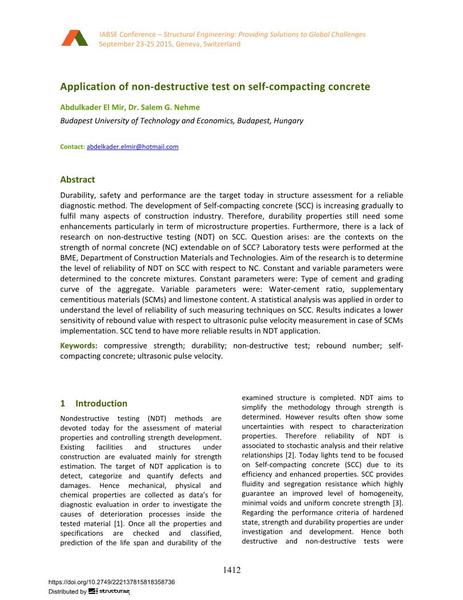Application of non-destructive test on self-compacting concrete

|
|
|||||||||||
Détails bibliographiques
| Auteur(s): |
Abdulkader El Mir
(Budapest University of Technology and Economics, Budapest, Hungary)
Salem G. Nehme (Budapest University of Technology and Economics, Budapest, Hungary) |
||||
|---|---|---|---|---|---|
| Médium: | papier de conférence | ||||
| Langue(s): | anglais | ||||
| Conférence: | IABSE Conference: Structural Engineering: Providing Solutions to Global Challenges, Geneva, Switzerland, September 2015 | ||||
| Publié dans: | IABSE Conference Geneva 2015 | ||||
|
|||||
| Page(s): | 1412-1419 | ||||
| Nombre total de pages (du PDF): | 8 | ||||
| Année: | 2015 | ||||
| DOI: | 10.2749/222137815818358736 | ||||
| Abstrait: |
Durability, safety and performance are the target today in structure assessment for a reliable diagnostic method. The development of Self-compacting concrete (SCC) is increasing gradually to fulfil many aspects of construction industry. Therefore, durability properties still need some enhancements particularly in term of microstructure properties. Furthermore, there is a lack of research on non-destructive testing (NDT) on SCC. Question arises: are the contexts on the strength of normal concrete (NC) extendable on of SCC? Laboratory tests were performed at the BME, Department of Construction Materials and Technologies. Aim of the research is to determine the level of reliability of NDT on SCC with respect to NC. Constant and variable parameters were determined to the concrete mixtures. Constant parameters were: Type of cement and grading curve of the aggregate. Variable parameters were: Water-cement ratio, supplementary cementitious materials (SCMs) and limestone content. A statistical analysis was applied in order to understand the level of reliability of such measuring techniques on SCC. Results indicates a lower sensitivity of rebound value with respect to ultrasonic pulse velocity measurement in case of SCMs implementation. SCC tend to have more reliable results in NDT application. |
||||
